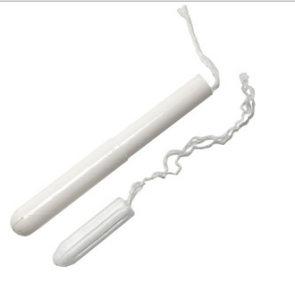What is Toxic Shock Syndrome ?
Toxic Shock Syndrome refers to the medical condition wherein the infecting bacteria release toxins that distressing symptoms and even death if it goes untreated. The syndrome often occurs as a complication of a bacterial infection caused either by staph or strep bacteria. People suffering from the disorder often have high fever, diarrhea, severe headaches, muscle aches, dizziness and rashes. It has been noted that several organs of the patients have become problematic as well.
Immediate treatment is highly needed when the symptoms of Toxic Shock Syndrome (TSS) arise as the condition may aggravate rapidly. Treating TSS often involves hospitalization to give the patient the appropriate medications for the underlying cause. The doctor may also incorporate supportive care to help the affected person manage the symptoms of the disorder.

Toxic Shock Syndrome causes
TSS occurs when bacteria release toxins which accumulate in the bloodstream. Once the toxins get into the bloodstream, the immune system is suppressed which will eventually render the major organs to dysfunction. When this happens, it would be just a matter of minutes or hours for multiple organ failure to occur. It is for this reason that anyone who exhibits the symptoms of the syndrome should seek prompt medical treatment.
The offending bacteria that can cause the syndrome are staphylococcus aureus (staph bacteria) and group A streptococcus (strep bacteria). These bacteria get into the body in a variety of ways, and these are:
- Tampons
Studies showed that half of TSS cases are related to tampon use. Tampons are invaluable essentials for women during menstruation. However, they could create the perfect place for bacteria to flourish and enter the body through the vagina. The tampon’s superabsorbent fibers can possibly scratch the vagina, giving the bacteria access into the bloodstream.
- Contraceptive sponge
Aside from contraceptive sponge, the offending bacteria can also enter the body through various birth control methods.
- Wounds and surgical cuts
The bacteria may also enter the body through wounds and surgical cuts. The syndrome may also occur as a complication of strep or staph infection.
How common in Toxic Shock Syndrome ?
The syndrome had been found to affect more women than men, with an estimated prevalence of 1 to 2 per 100,000 women. It is said to affect young and healthy women. Even though the syndrome is more prevalent among women between 15 and 44 years old, it may also occur in men, post-menopausal women and even children by means of staph infection. These people may likely be suffering from some kind of staph infection which leads to skin infection, abscess and pneumonia.
The chances of acquiring TSS are high under the following conditions:
- Tampon use
- Menstruation
- Staph infection
- Surgery
- Certain birth control methods
- Post-surgery wound infection
Those who have the abovementioned factors should learn the symptoms of the syndrome and seek medical treatment. TSS symptoms develop suddenly and worsen swiftly, resulting in potentially deadly complications like shock and multiple organ failure. TSS really kills and so prompt treatment is highly needed.
Symptoms of Toxic Shock Syndrome
The signs and symptoms of TSS occur all of a sudden, and in just a short period of time, the condition can turn deadly. For this reason, it is very important for anyone who is exposed to the risk factors of TSS to familiarize its manifestations. The affected individual suddenly develops high fever followed by hypotension or low blood pressure. Sufferers also experience severe headaches, muscle aches and seizures. They may also deal with vomiting and diarrhea, sore throat, red eyes and mouth, as well as red rashes on the soles and palms. Confusion is another symptom of the syndrome.
These symptoms do not occur simultaneously. Patients should inform their doctors about the specific symptoms they have experienced. They should also tell the doctor the length of time they had the symptoms.
Diagnosis of Toxic Shock Syndrome and treatment
Definitive tests for TSS have not yet been established, so doctors diagnose the syndrome by means of urine and blood tests. These will help determine the presence of strep or staph infection. In addition to urine and blood tests, the doctor will also use the criteria for diagnosing the syndrome which include fever, hypotension, rashes and organ malfunction.
Around 50% of the cases of Toxic Shock Syndrome are deadly and recurrence is possible, or even inevitable. Recovery takes time and treatment may involve taking medications to treat the underlying condition. Taking medications may also be combined with supportive care to help the patient manage the physical, emotional and psychological distress brought by the syndrome. Treatment also involves monitoring the major organs to prevent organ breakdown.
Antibiotic treatment include combination of penicillins, cephalosporins or vancomycin. Doctors may prescribe clindamycin or gentamicin to prevent toxic production.
Toxic Shock Syndrome – Use Tampons or No ?
TSS is life-threatening but it can be prevented. Among the precautionary measures a person should consider to prevent the syndrome from occurring include:
- Changing tampons every 6 or 7 hours
- Opt for sanitary pads instead of tampons
- Observe proper hygiene and skin care
- Avoid tampons on unusual vaginal discharges